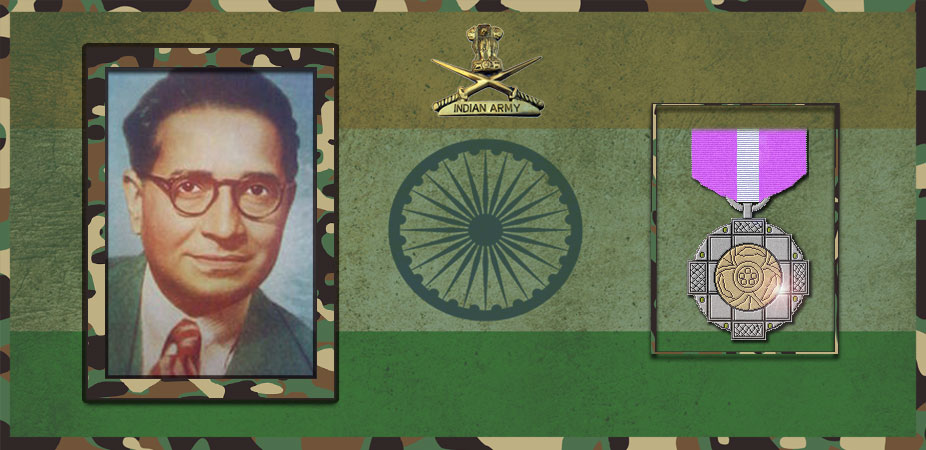Let's salute to our Indian Army together, We are proud to be Indian.
Let's salute to our Indian Army together, We are proud to be Indian.

Sir Kariamanickam Srinivasa Krishnan, FRS,(4 December 1898 – 14 June 1961) was an Indian physicist. He was a co-discoverer of Raman scattering, for which his mentor C. V. Raman was awarded the 1930 Nobel Prize in Physics.
Kariamanickam Srinivasa Krishnan, Iyengar generally referred to as K. S. Krishnan or KSK, was born on 4 December 1898 in Watrap, Tamil Nadu in a Brahmin family. His father was a farmer-scholar deeply versed in Tamil and Sanskrit literature. He had his early schooling in Hindu Higher Secondary school, Watrap in his native village, after which he attended the American College in Madurai and the Christian College, Madras where after gaining his degree in Physics he became a Teacher in Hindu Higher Sec School in his native village and collaborated with Sir C. V. Raman on the discovery of the inelastic scattering of light.
In 1920, Krishnan went to work with C.V. Raman at the Indian Association for the Cultivation of Science, Kolkata (then Calcutta). There he engaged himself in experimental study of the scattering of light in a large number of liquids and its theoretical interpretations. He played a significant role in the discovery of the Raman scattering.
In 1928 he moved to the Dacca University (now in Bangladesh) as the Reader in the physics department where he studied magnetic properties of crystals in relation to their structure. Krishnan, along with other rising scientists such as Santilal (S.) Banerjee, B.C. Guha, and Asutosh Mookerjie developed an elegant and precise experimental technique to measure the magnetic anisotropy of dia – and paramagnetic crystals. Their findings were published by the Royal Society of London in 1933 under the title, Investigations on Magne-Crystallic Action.
In 1933 he returned to Kolkata to take up the post of Mahendralal Sircar Professor of Physics in the Indian Association for the Cultivation of Science where he continued to collaborate fruitfully with Dr. Santilal Banerjee to elaborate on the magnetic properties of crystals in relation to their structure. Their joint papers and communications (published in Nature, Terrestrial Magnetism and Atmospheric Electricity, and by the Royal Society), remain to this day, aside from a number of other pathbreaking contributions they also published in various Physics journals, the most definitive scientific studies on the structure and tendencies of small crystals. Their experiments in Dhaka and continued collaborative research in Kolkata led to what is now known as the Krishnan Banerjee method in measuring the magnetic susceptibility of small crystals.
Krishnan was elected as Fellow of the Royal Society (FRS) in 1940.His Royal Society candidature certificate in 1935 read:
“Distinguished for his investigations in molecular optics and in magne-crystalline action:collaborated with Sir C.V. Raman in extensive theoretical and experimental studies on light scattering, molecular optics and in the discovery of the Raman Effect (1928). More recently has been publishing many valuable investigations (Phil Trans Royal Society and elsewhere) on the significance of magnetic anisotropy in relation to crystal architecture and thermo-magnetic behaviour at the lowest temperatures. Has published important work on pleochroism in crystals and its relation to photo-dissociation. Leader of an active school of research in Calcutta”.
In 1942, he moved to Allahabad University as Professor and Head of the Department of Physics where he took up the physics of solids, in particular of metals.
He was knighted in the 1946 Birthday Honours List and awarded the Padma Bhushan by the Government of India in 1954. He was the first recipient of the prestigious Bhatnagar Award in 1958.
On 4 January 1947. Dr. K. S. Krishnan was appointed as first director of National Physical Laboratory, India. This was one of the earliest national laboratories set up under the Council of Scientific & Industrial Research.